Proper Royals
Welcome to the Proper Royals FAQs page! Here, we’ve compiled answers to the most common questions about purchasing and caring for ball pythons. Whether you’re a first-time buyer or an experienced reptile enthusiast, our FAQs are designed to provide you with the information you need to make informed decisions. From selecting the perfect ball python to understanding their care requirements, we’re here to help you every step of the way.
Explore our FAQs to find detailed answers on:
- What to consider when buying a ball python
- Best practices for feeding and habitat setup
- Health and handling tips
- Shipping and payment options
If you have a question that’s not covered here, feel free to reach out to us directly. Our team is dedicated to ensuring you have all the support and information needed to enjoy your new pet.
Proper Royals – Breeding Quality with Honesty and Care
What temperature and humidity do ball pythons need?
Ball pythons require a temperature gradient with a warm side of 88-92°F and a cool side of 78-80°F. Humidity should be maintained at 50-60%, with higher levels (up to 70%) during shedding.
What should I feed my ball python and how often?
Ball pythons primarily eat rodents. Juveniles should be fed every 5-7 days, while adults can be fed every 7-14 days. Always feed prey that is appropriately sized, generally no larger than the widest part of the snake’s body. We recommend rats – either frozen thawed or live. We also strongly recommend feeding at consistent times (we feed in the evening right before bed), and in the enclosure the ball python lives in.
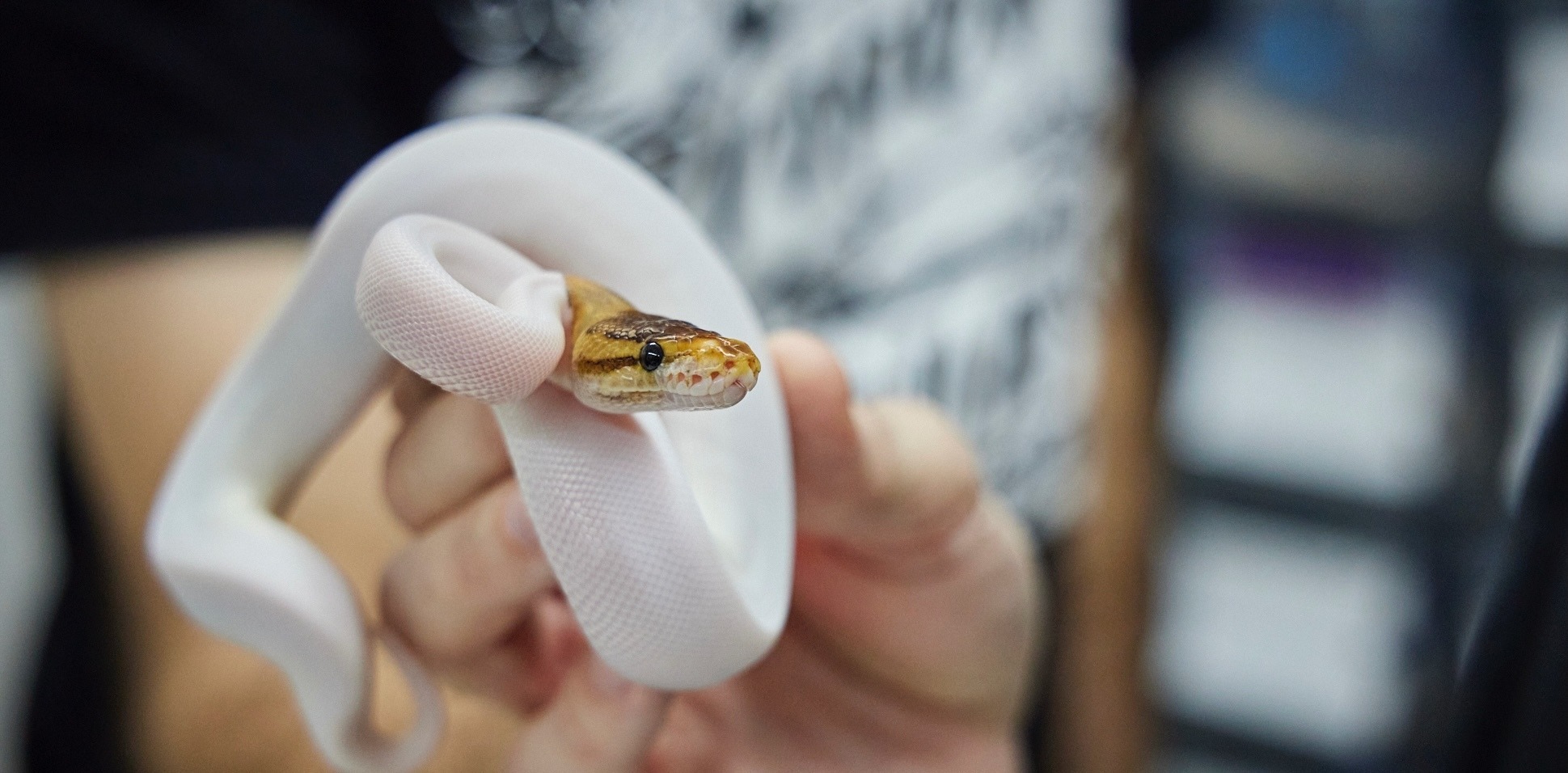
How do I handle my ball python safely?
Handle your ball python gently and confidently, supporting its body. Avoid sudden movements and never handle it right after feeding or during shedding. Regular handling can help your snake become accustomed to human interaction.
How can I tell if my ball python is healthy?
A healthy ball python has clear eyes, a firm body, smooth and unbroken scales, and a healthy appetite. Watch for signs of illness such as wheezing, mucus, lethargy, and refusal to eat, and consult a vet if necessary.
Why is my ball python refusing to eat?
Ball pythons may refuse food due to stress, incorrect enclosure temperatures, shedding, or illness. Ensure their habitat husbandry is optimal and try offering food again each week. It is not uncommon for ball pythons to fast for long periods of time. During these fasts monitor their body condition and behavior. If they begin to lose significant weight or display signs of lethargy or diarrhea seek professional veterinary help.
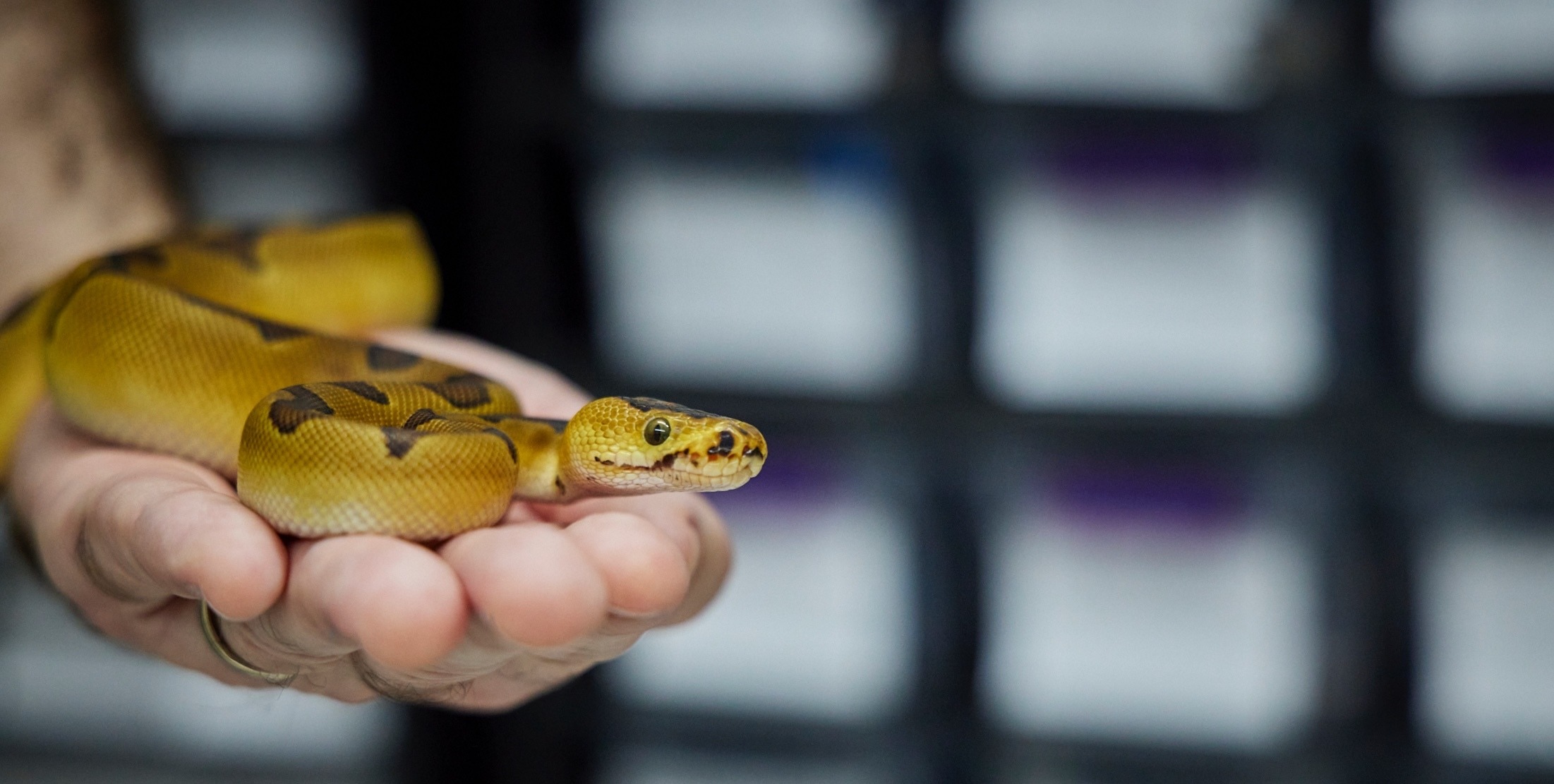
How often do ball pythons shed their skin?
Juvenile ball pythons shed approximately every 4-6 weeks, while adults shed every 6-8 weeks. Ensure proper humidity to facilitate shedding and provide a moist hide or a shedding box if needed. How much and how often they eat will also affect their shed cycles.
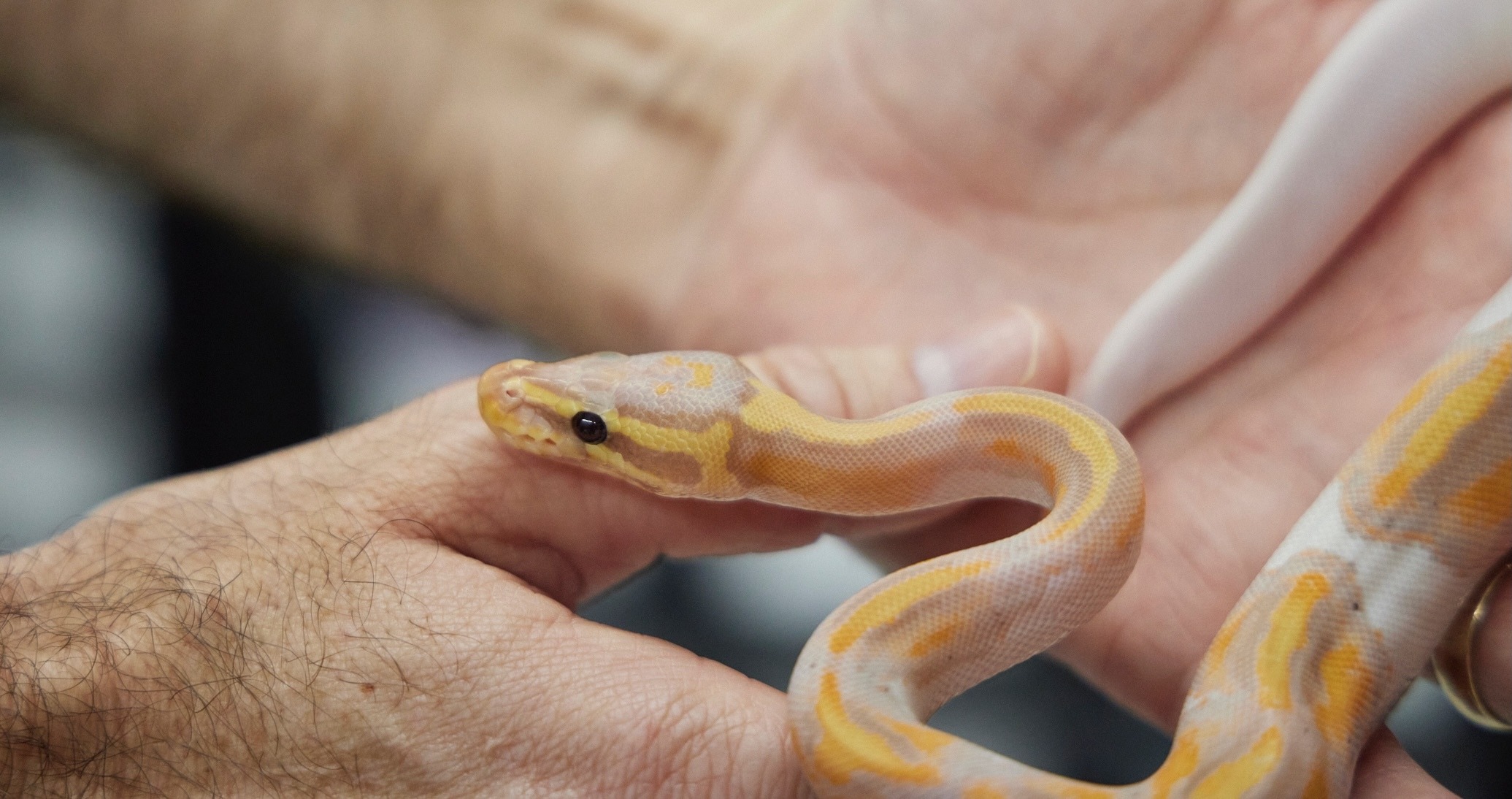
Can ball pythons live together?
It is strongly recommended to not house ball pythons together as they are solitary animals. Cohabitation can lead to stress, feeding issues, and the spread of disease.
How long do ball pythons live in captivity?
With proper care, ball pythons can live for 20-30 years in captivity. Providing a stable environment with proper nutrition and veterinary care can help ensure a long and healthy life for your pet snake.
What kind of substrate is best for ball pythons?
Suitable substrates for ball pythons include aspen bedding, cypress mulch, and coconut husk. Avoid cedar and pine shavings as they can be toxic. The substrate should be easy to clean and able to maintain humidity levels.
What is a Banana Morph Ball Python?
A Banana Morph Ball Python is a popular and visually striking morph of the ball python (Python regius) characterized by its bright yellow and purple coloration. This morph has become highly sought after due to its unique and attractive appearance.
Characteristics:
- Coloration: Banana ball pythons have a distinctive yellow base color with spots or blotches of purple or lavender, creating a visually appealing contrast.
- Pattern: They often exhibit a typical ball python pattern, but the colors make these patterns more vibrant and noticeable.
- Size: Like other ball pythons, banana morphs typically grow to a length of 3-5 feet.
- Temperament: They generally have a calm and docile nature, making them suitable for novice snake owners.
Genetics:
- Inheritance: The banana morph is co-dominant, meaning that breeding a banana ball python with a normal ball python can produce offspring with the banana trait.
- Banana Combos: Banana ball pythons can be bred with other morphs to create unique combinations, such as the Banana Pied or Banana Spider morphs.
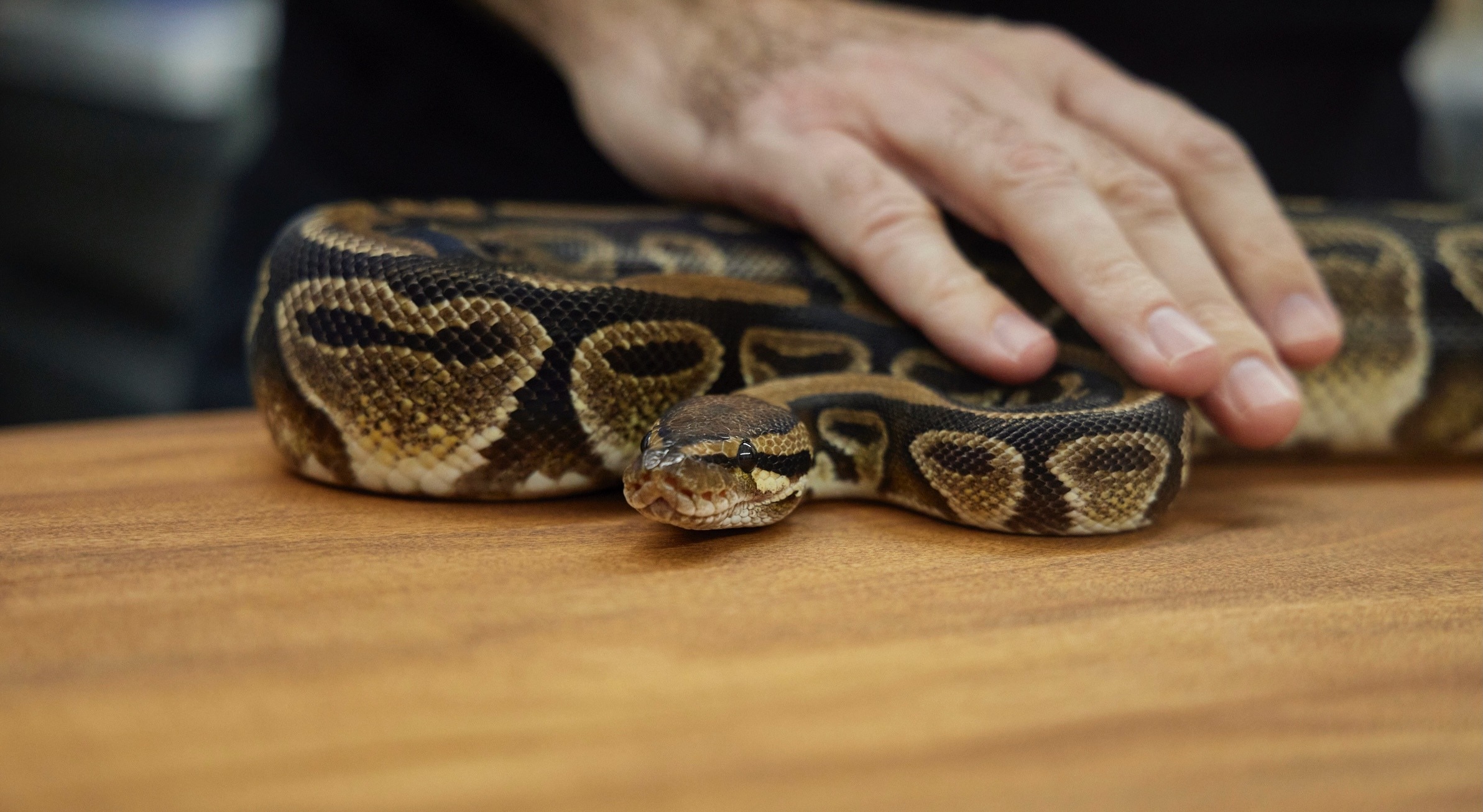
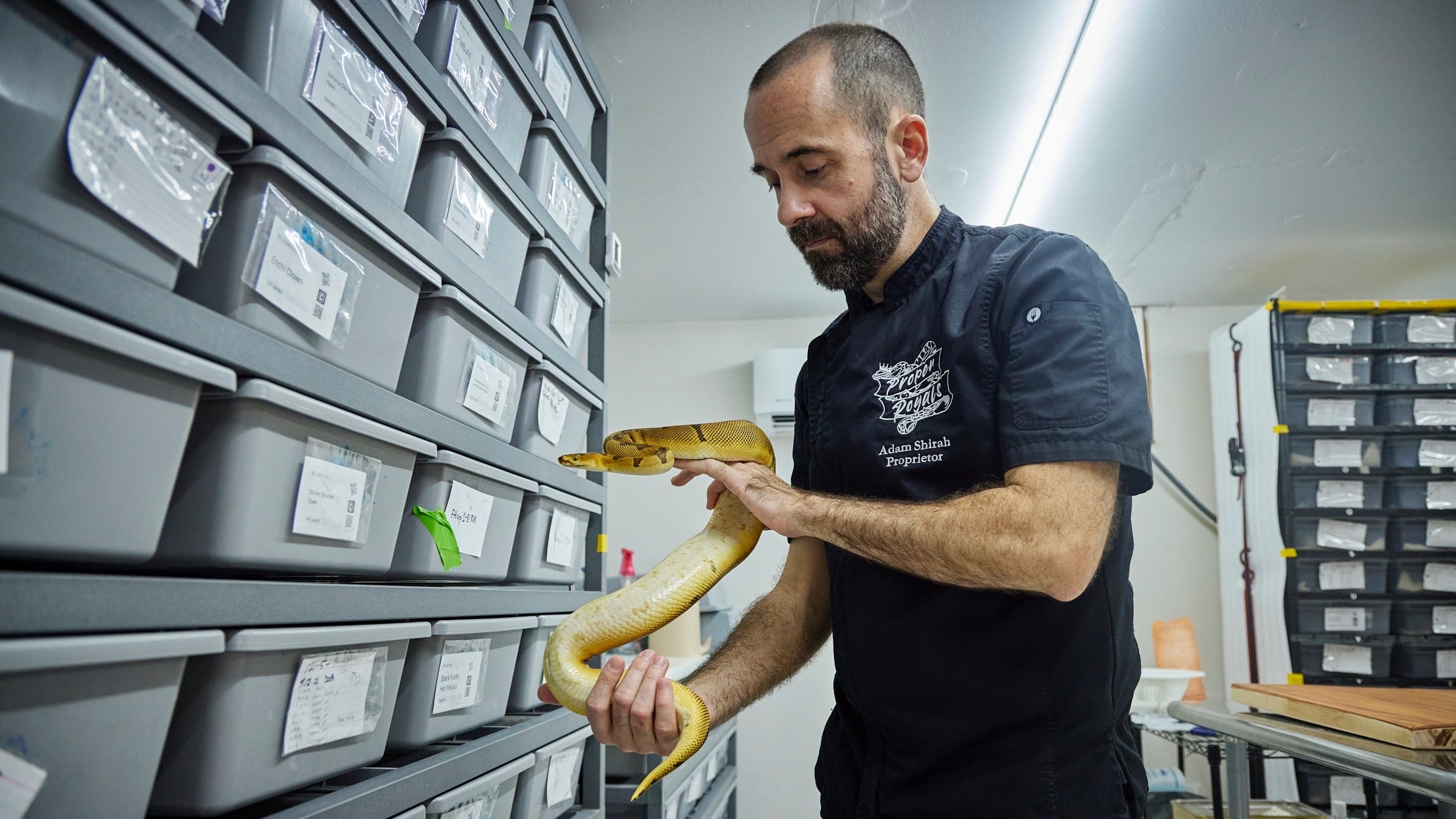
Banana ball pythons are favored by both hobbyists and breeders due to their stunning appearance and the potential for creating new morphs. They are widely available in the pet trade and can vary in price depending on their specific genetic traits and patterns.
What is a Blue Eyed Lucy (BEL) Ball Python?
A Blue Eyed Lucy (BEL) Ball Python is a stunning and highly prized morph of the ball python (Python regius) characterized by its nearly all-white appearance and striking blue eyes. This morph results from breeding specific combinations of other ball python morphs, such as Mojave, Lesser, or Butter.
Characteristics:
- Coloration: BEL ball pythons are predominantly white or very light in color, with bright blue eyes. Some may have subtle yellow or cream markings, but many are pure white.
- Pattern: Unlike other ball python morphs, BELs typically lack the intricate patterns seen in other morphs, which adds to their unique appeal.
- Size: They generally grow to a length of 3-5 feet, similar to other ball python morphs.
- Temperament: Blue Eyed Lucy ball pythons are known for their calm and docile nature, making them suitable for beginner and experienced snake owners alike.
Genetics:
- Inheritance: The Blue Eyed Lucy morph is produced through specific pairings of ball python morphs like Mojave, Lesser, Butter, or Special. Pairing these morphs can result in BEL offspring.
- Banana Combos: Breeding BELs can be complex, as it requires the right combination of morphs. However, successful breeding results in visually stunning and highly desirable snakes.
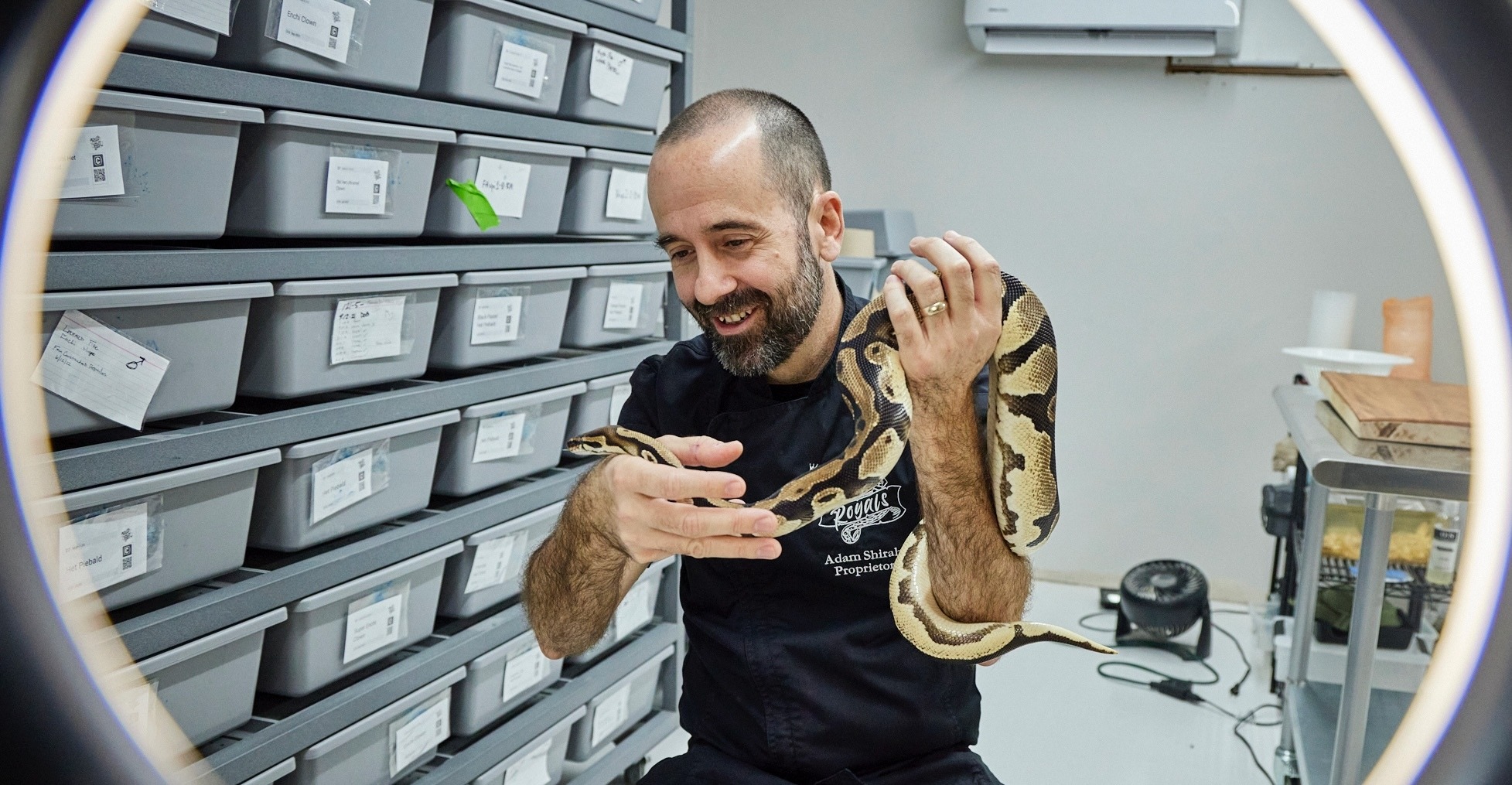
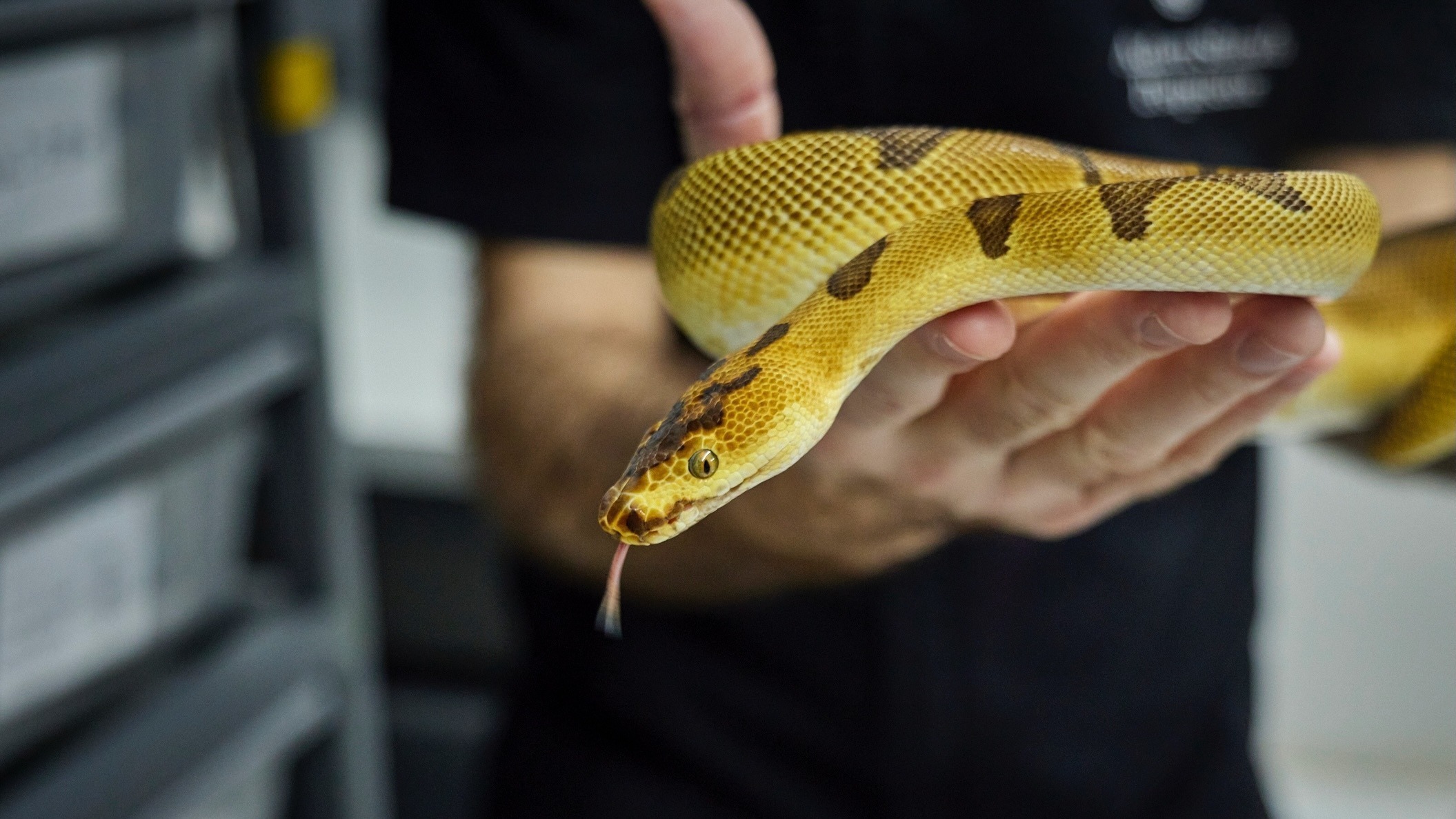
Blue Eyed Lucy ball pythons are extremely popular among snake enthusiasts and breeders due to their unique appearance and gentle temperament. Their striking looks make them one of the most sought-after morphs in the ball python community.
What Should I Consider When Buying a Ball Python?
Buying a ball python is an exciting experience, but it’s important to consider several factors to ensure you make the best choice for both you and your future pet. At Proper Royals, we want to help you make an informed decision. Here’s what you need to know when buying a ball python.
1. Source of Purchase
Choose a reputable breeder or seller. Reputable breeders will provide healthy animals, proper documentation, and care information. Look for breeders who have positive reviews and are transparent about their breeding practices. At Proper Royals, we pride ourselves on our commitment to quality and customer satisfaction.
2. Health and Appearance
Examine the ball python for signs of good health:
- Clear Eyes: No cloudiness or discharge.
- Healthy Skin: Smooth, without mites or lesions.
- Active Behavior: Responsive and alert, though ball pythons can be shy.
- Proper Weight: Not too thin or too heavy.
3. Morphs and Genetics
Ball pythons come in a variety of morphs, each with unique colors and patterns. Research different morphs to understand their specific care needs and potential genetic issues. At Proper Royals, we offer a diverse selection of beautiful morphs, ensuring there’s something for every enthusiast. Visit our Ball Pythons for Sale page to sort and filter by genetics and find the perfect ball python for you.
4. Enclosure and Habitat Requirements
Before bringing your ball python home, ensure you have the appropriate setup:
- Enclosure: A secure, well-ventilated terrarium or vivarium. For detailed setup instructions, check out our Care Sheet Videos for enclosure setup details.
- Heating: A heat source to maintain a temperature gradient (75-80°F on the cool side, 88-92°F on the warm side).
- Humidity: Maintain humidity levels between 50-60%.
- Hides: Provide multiple hiding spots to make your snake feel secure.
- Substrate: Use safe and appropriate bedding material.
5. Long-term Commitment
Ball pythons can live for 20-30 years with proper care. Consider the long-term commitment and ensure you are prepared for the responsibilities of caring for your snake over its lifetime.
6. Feeding Requirements
Ball pythons primarily eat rodents. Be prepared to source and provide appropriately sized prey items. If you’re new to feeding ball pythons, check out our care sheet Feeding Your Ball Python: Best Practices and Common Pitfalls and our video Proven Tip: Get Your Ball Python to Eat Thawed Rats Every Time for more information.
7. Legal Considerations
Ensure that keeping a ball python is legal in your area. Some regions have specific regulations regarding the ownership of exotic pets.
8. Budget
Consider the initial and ongoing costs of owning a ball python:
- Initial Costs: Purchase price of the snake, enclosure setup, and initial veterinary checkup.
- Ongoing Costs: Food, substrate, heating elements, and regular veterinary care.
By considering these factors, you’ll be well-prepared to provide a happy and healthy home for your new ball python. At Proper Royals, we’re here to support you every step of the way. If you have any questions or need further assistance, don’t hesitate to reach out to us.

